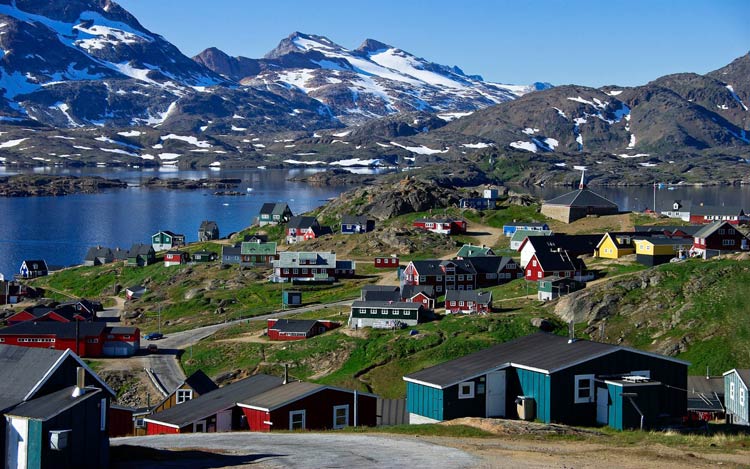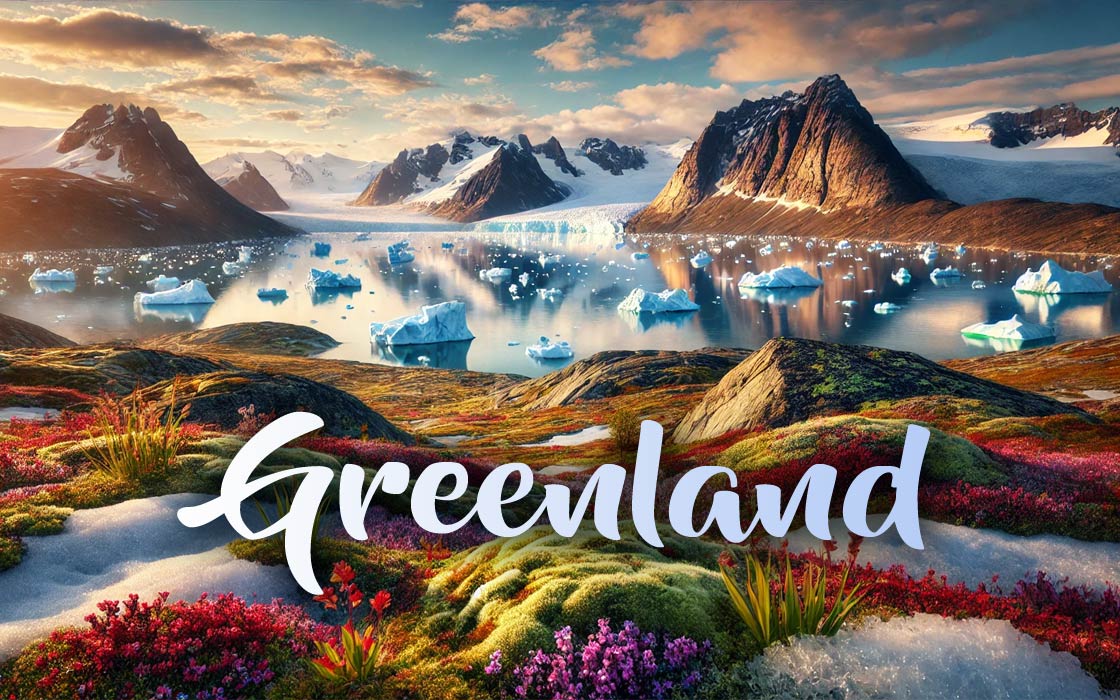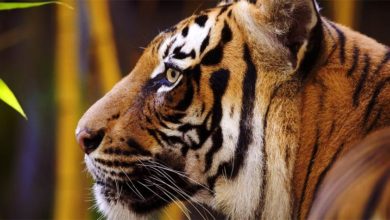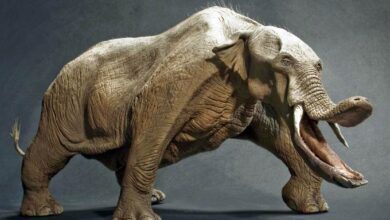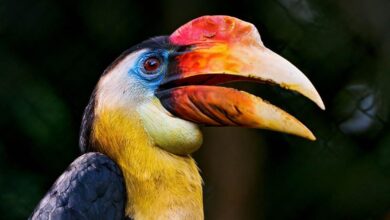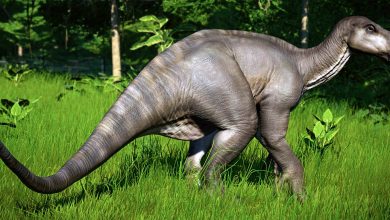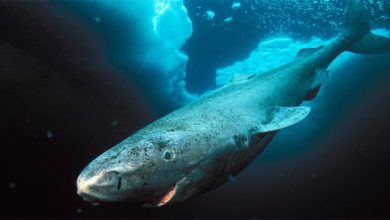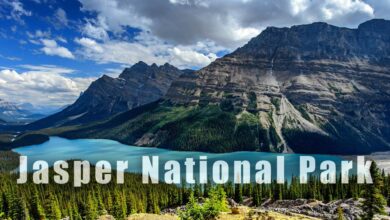Greenland’s Nature
A Realm of Ice, Tundra, and Extreme Conditions
Greenland, the world’s largest island, is a place full of contrasts. On one side of the island, endless expanses of ice and harsh tundra stretch out, while on the other, you can find picturesque, though still wild, coastlines with fjords teeming with marine life. Covered by glaciers for over 80% of its area, it offers stark yet breathtaking landscapes, unique ecosystems, and wildlife adapted to extreme climatic conditions. This island fascinates scientists, ecologists, and tourists alike, serving as a living laboratory for climate change and organism adaptation to Arctic life.
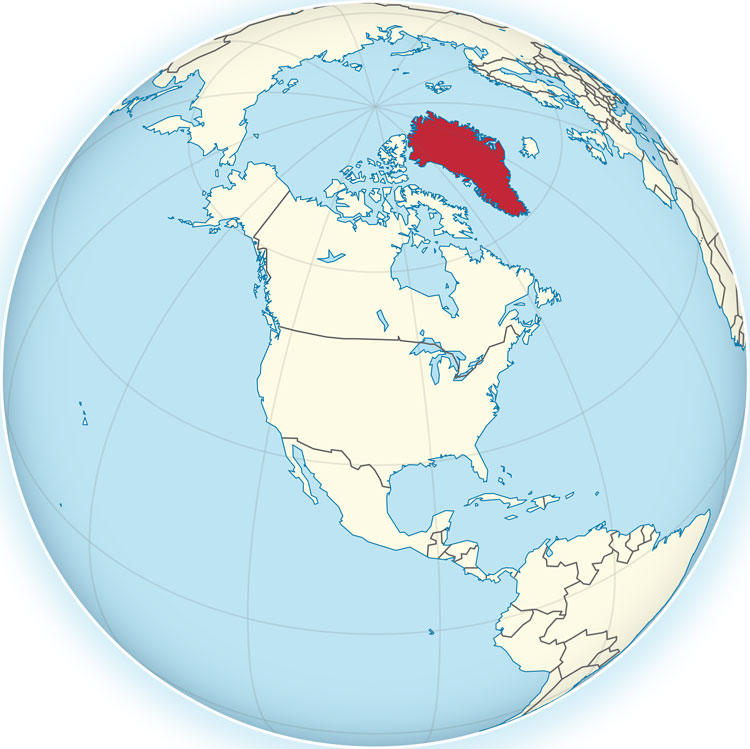
Geography and Climate
Greenland spans an area of 2.166 million km² (836,300 square miles), making it seven times larger than Poland. The island is located between the Arctic and Atlantic Oceans and is mostly covered by an ice sheet that stores 8% of the world’s freshwater resources. The ice cap reaches a thickness of up to 3 km (1.9 miles), and its melting is a key indicator of climate change. Greenland is home to the world’s largest National Park.
Climate
Greenland lies within the polar and subpolar zones. In the central regions, winter temperatures drop to -47°C (-52.6°F), while coastal areas experience more moderate conditions, with summer temperatures ranging from 0°C to 10°C (32°F to 50°F). Strong winds and high humidity further intensify the feeling of cold.
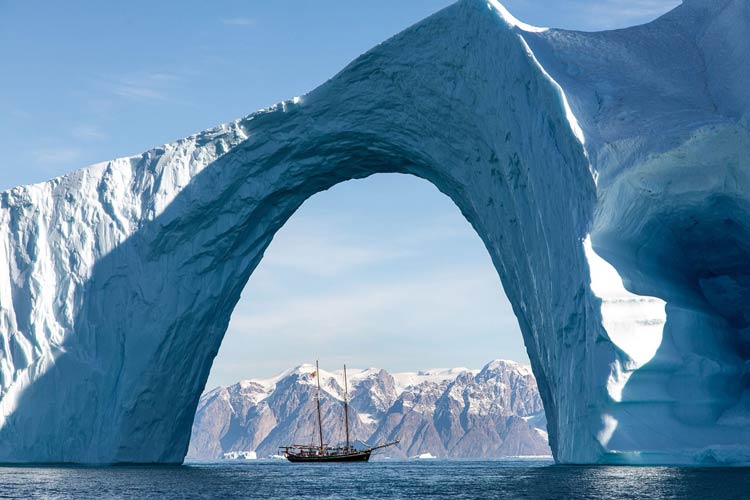
Greenland’s Flora
The Tundra in a Multicolored Guise
The flora of Greenland is sparse but surprisingly diverse, considering the harsh climatic conditions. One of the characteristic ecosystems is the tundra, where you can find arctic willows growing only a few centimeters tall, perfectly adapted to low temperatures and strong winds. Along the coasts and in the valleys, there is tundra dominated by plants resistant to frost and wind. You can find bryophytes, lichens, and low shrubs such as crowberries and blueberries. In summer and autumn, the tundra transforms into a multicolored mosaic, delighting tourists and researchers alike.
Characteristic Plants of Greenland
Despite the harsh climatic conditions, Greenland is home to remarkably hardy plant species that have adapted to life in the tundra.
- Lichens and Mosses: Key components of the tundra ecosystem, playing a significant role in soil binding and water retention. Lichens, a symbiosis of fungi and algae, are the primary food source for reindeer in winter. Mosses, on the other hand, form dense, green carpets that insulate the soil from frost.
- Bog Blueberry (Vaccinium uliginosum): This low-growing shrub is perfectly adapted to cold conditions and a short growing season. Its edible berries, rich in vitamins and antioxidants, are a food source for both humans and animals, such as birds and bears.
- Crowberry, black crowberry (Empetrum nigrum): This plant grows in the harsh, acidic soils of the tundra. Its black berries are not only edible but also used in traditional medicine. Due to its ability to spread in conditions where other plants cannot survive, crowberry is an important element stabilizing the tundra ecosystem.
- Arctic Willow (Salix arctica): One of the smallest trees (actually a shrub) in the world, usually reaching up to 10 cm (approximately 4 inches) in height. This plant grows in dense clusters, forming characteristic “cushions” that help protect its roots from freezing. The leaves of the willow are rich in nutrients and are a valuable food source for musk oxen and other Arctic animals.
Each of these species plays a crucial role in the functioning of the Greenlandic tundra, forming the foundation for complex ecosystems. Their adaptive abilities are a living testament to the remarkable resilience of life in the Arctic.
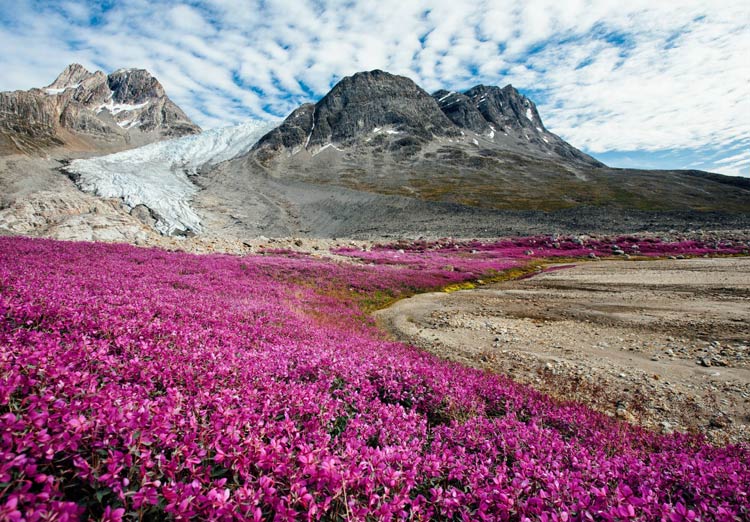
Greenland’s Fauna
Icy Rulers and Masters of Adaptation
Despite the harsh climate, Greenland is home to a surprisingly complex ecosystem of animals. From invertebrates to land and marine mammals, life in the Arctic thrives in forms adapted to extremes.
Land Mammals
- Polar Bear: The king of the Arctic, reaching weights of up to 700 kg (1,543 lbs) and body lengths of up to 3 m (9.8 ft). An exceptional swimmer, it can traverse over 100 km (62 miles) in icy water, hunting primarily seals. It can travel hundreds of kilometers in search of food.
- Reindeer (Caribou): A herd animal with impressive antlers, known for its adaptation to the harsh conditions of the tundra. Its ability to digest lichens and leaves makes survival possible in the winter months.
- Muskox: A relic of the Ice Age, whose dense fur (qiviut) is one of the warmest fibers in the world. It protects it from frost even at temperatures below -40°C (-40°F).
- Arctic Fox: A master of camouflage and survival, it changes its fur color from white in winter to brown in summer. It eats everything from rodents to carrion.
- Arctic Wolf: Lives in organized packs, often hunting reindeer. It copes well in extreme conditions thanks to strong social bonds within the group.
- Arctic Hare: Its white fur provides excellent camouflage in the snow, and its strong hind legs allow it to escape predators at speeds of up to 60 km/h (37 mph).
- Lemming: A key element of the Arctic food chain, often found in large numbers, which supports predator populations.
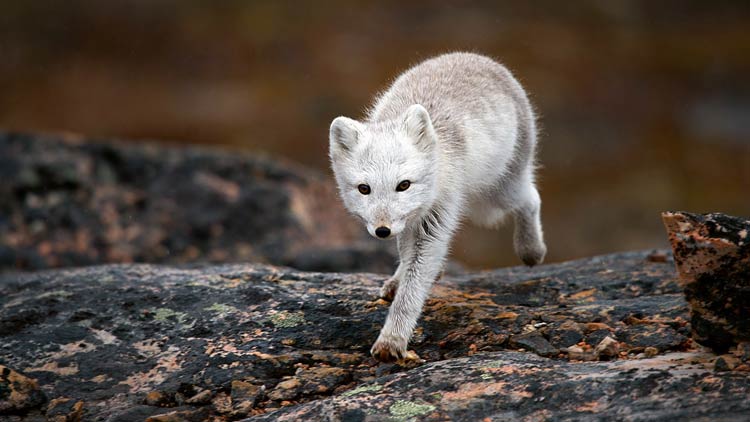
Birds
Greenland is a crucial stopover for many migratory birds that nest here in the summer when food resources such as fish and invertebrates are available.
- Snowy Owl: An impressive predator of the Arctic, recognizable by its white plumage, which provides excellent camouflage in the winter landscape. These owls hunt mainly lemmings, and their presence is an indicator of the health of the local ecosystem.
- Ptarmigan: These birds have perfectly adapted to life in the tundra, changing their feather color from brown in summer to white in winter. This makes them almost invisible to both predators and humans.
- Fulmar: A marine wanderer that spends most of its life on the open waters. Fulmars are excellent fliers, using air currents over the waves to move efficiently over long distances.
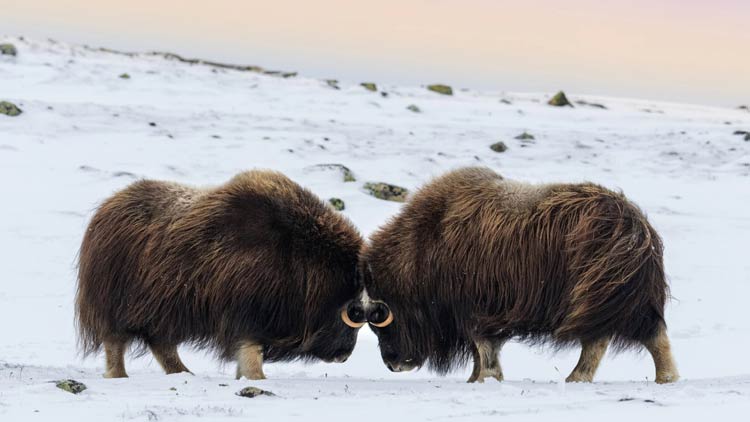
Marine Fauna
The waters surrounding Greenland are home to some of the most iconic marine species, attracting researchers and tourists from around the world.
- Cetaceans and Whales: Narwhals, known as the “unicorns of the sea” due to their spiral tusk, primarily inhabit the cold northern waters. The bowhead whale, known for its exceptionally long lifespan (over 200 years!), is a symbol of Arctic ecosystems. Orcas, as apex predators, hunt seals, fish, and other whales.
- Seals: The ringed seal, one of the smallest Arctic seals, is a master diver, spending up to 45 minutes underwater. It is a staple food for polar bears.
- Fish: Arctic cod and halibut are not only a pillar of the local fishing economy but also a crucial component of the diet of many marine predators, including whales and seals. Greenland sharks have become a symbol of longevity.
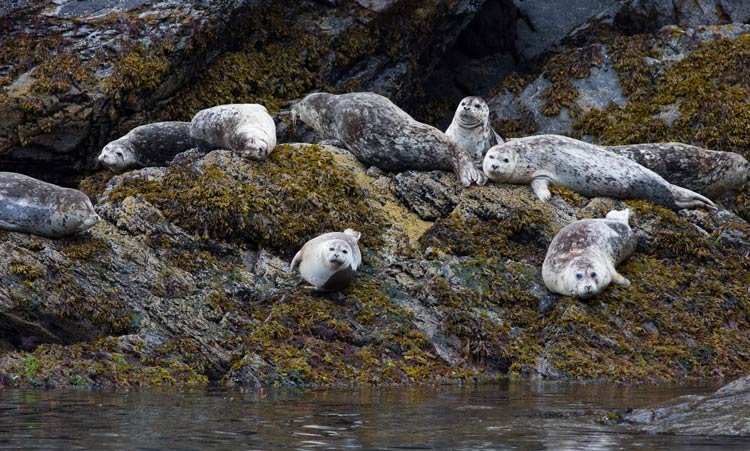
Insects
Although the invertebrates of the Arctic are small, they play a crucial role in ecosystems.
- Arctic Mosquitoes: The short Arctic summer is their time of intense activity. These insects, while bothersome to humans, are an important food source for birds.
- Bumblebees: Tundra bumblebees, thanks to their dense hair, can function in cold conditions. They are the main pollinators of many tundra plants, which makes them crucial for the survival of the local flora.

Greenland’s Natural Resources
The Hidden Riches of the Arctic
Greenland, although primarily known for its glaciers and tundra, conceals extraordinary natural riches. The island is a treasure trove of mineral resources that attract the attention of scientists and investors alike.
Mineral Resources
Beneath Greenland’s surface lie rich deposits of minerals such as iron, copper, nickel, zinc, gold, and rare earth metals, crucial for modern technologies, including the production of electronic devices and renewable energy sources. In recent years, the growing demand for these resources has made Greenland an increasingly important point on the global mining exploitation map.
Energy Potential
Melting glaciers are revealing new opportunities for energy resource extraction. The waters surrounding the island contain potential deposits of oil and natural gas. Although extraction in these challenging conditions is costly and environmentally controversial, Greenland remains a subject of interest for international energy companies.
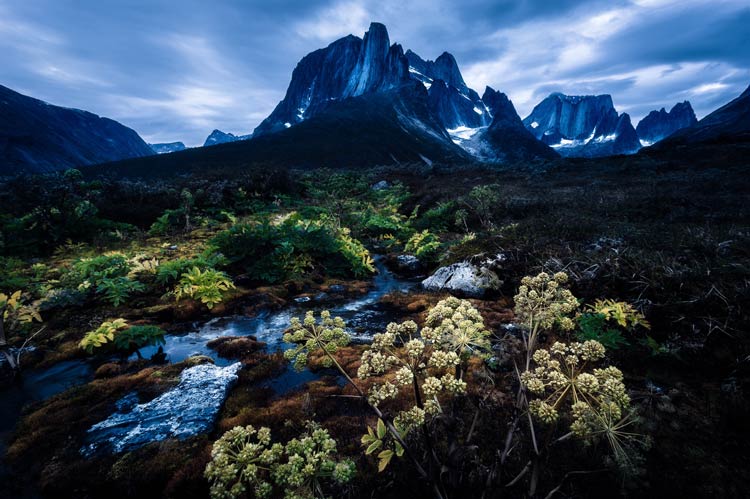
Biological Resources
Greenland also possesses biological resources, such as fish and seafood, which play a crucial role in the local economy. Species like cod, halibut, and Greenland shrimp are the foundation of the fishing industry. Thanks to the clean Arctic waters, these products are in high demand on international markets.
Challenges of Exploitation
However, the exploitation of Greenland’s natural resources is a challenge. The harsh climate, difficult geographical conditions, and limited infrastructure significantly hinder mining operations. Additionally, environmental issues and the protection of Arctic ecosystems raise significant concerns, which means that decisions about industrial development are made cautiously and in consultation with local Inuit communities.
Greenland’s resources represent enormous potential, but their sustainable use will be crucial for preserving the island’s unique nature and its future.
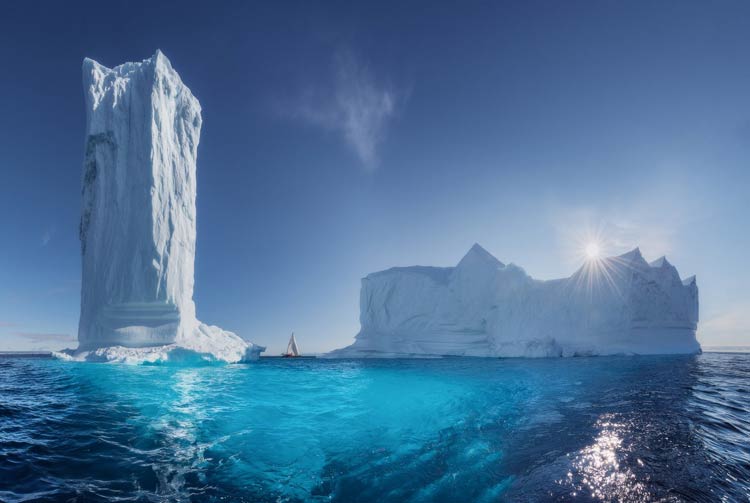
Climate Change
The Arctic in Danger
Greenland is an epicenter of global climate change. Studies show that the annual ice loss is approximately 262 gigatons, which significantly contributes to global sea-level rise. Furthermore, these changes affect local ecosystems, such as shifts in marine mammal and bird habitats, and impact ocean circulation, including the Gulf Stream.
In recent decades, the rate of ice sheet melting has increased dramatically. The annual ice loss translates to a sea-level rise of 0.7 mm per year. In the long term, this rise threatens to flood many low-lying areas worldwide, such as the Maldives or Bangladesh, and may lead to the destabilization of coastal ecosystems and an increase in extreme weather events.
The process of isostasy (a state of balance between different elements of the Earth’s crust) causes some areas of Greenland to rise by as much as 8 mm per year, which is the result of the Earth’s crust being relieved after the ice melt.
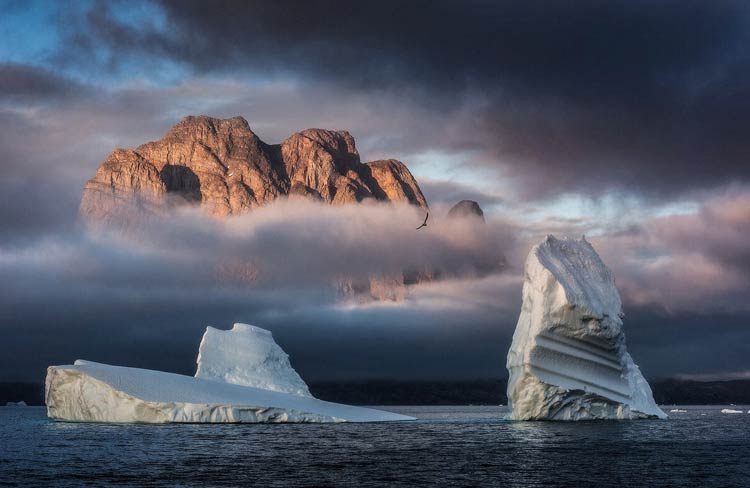
Tourism
Discovering the Icy Land
Greenland attracts an increasing number of tourists who wish to experience the raw beauty of the Arctic. Over the past ten years, the number of visitors has increased by approximately 50%, attracting over 100,000 people annually. This growth is associated with both a greater interest in ecotourism and improved flight accessibility to the island.
The Kangerlussuaq region offers numerous hiking trails, the opportunity to explore the tundra, view glaciers, and encounter local fauna. Cruises along the coast allow for whale, seal, and seabird watching, as well as contact with the Inuit culture, who have inhabited the island for millennia.
Greenland is a unique place that allows you to feel the power of nature and see a world where nature still dominates human activity.
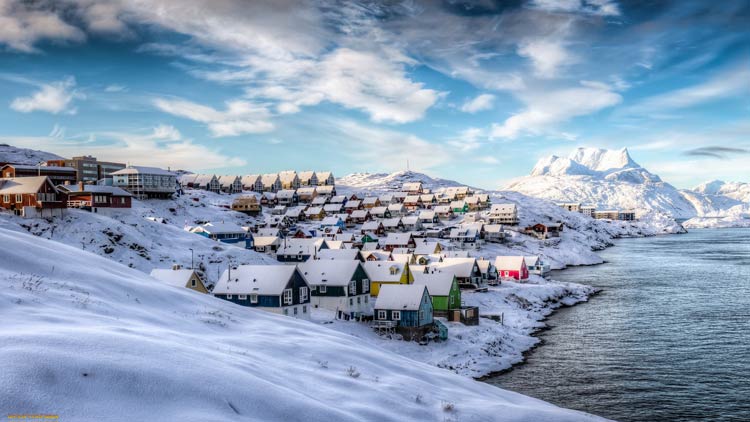
Donald Trump and the US Desire to Acquire Greenland
In recent days, the US President, Donald Trump, has once again expressed interest in acquiring Greenland, an autonomous territory of Denmark. The first mentions of this idea appeared as early as 2019, but now the topic has returned with greater intensity. Historically, the USA wanted to acquire Greenland even earlier – in 1867 and 1946.
Reasons for Interest in Greenland
Greenland has a strategic location and rich natural resources, making it attractive to the United States. The island is rich in minerals such as lithium, nickel, cobalt, and copper, which are crucial for modern technologies. Additionally, there are significant oil and gas reserves in its area.
Reactions from Denmark and Greenland
Both the Danish and Greenlandic authorities have firmly rejected the proposal to sell the island. Danish Prime Minister, Mette Frederiksen, after a telephone conversation with Donald Trump, described the situation as serious and emphasized that the future of Greenland should be decided by its inhabitants.
